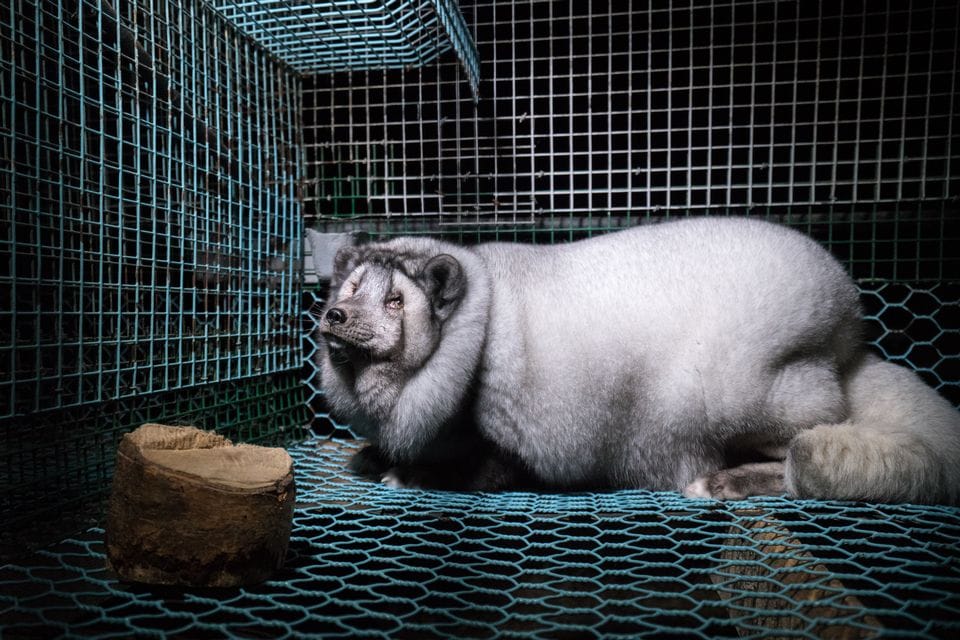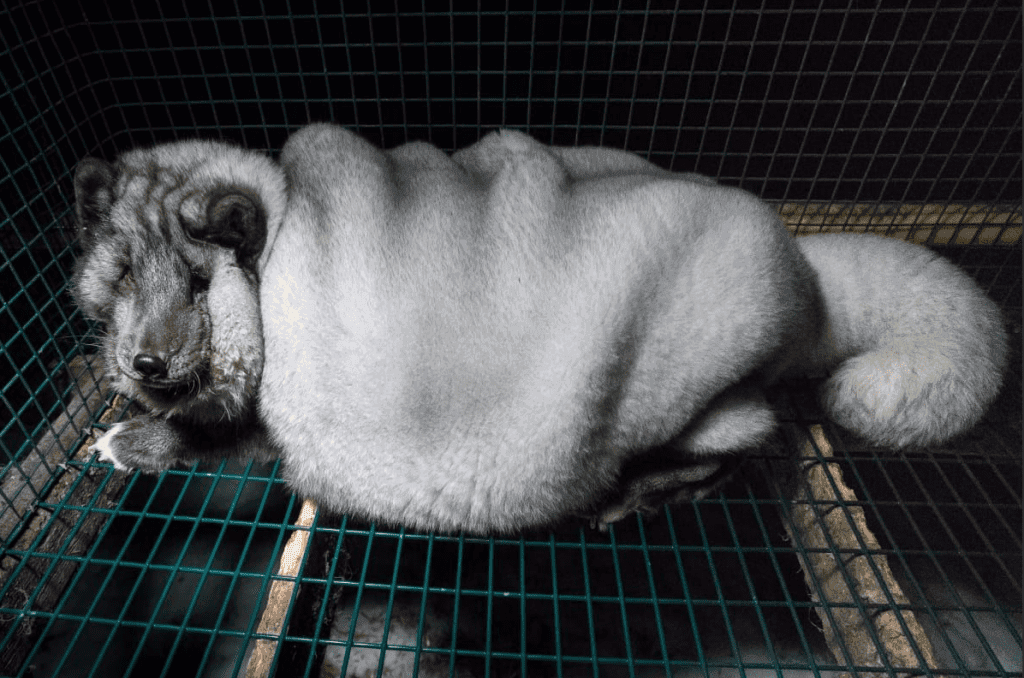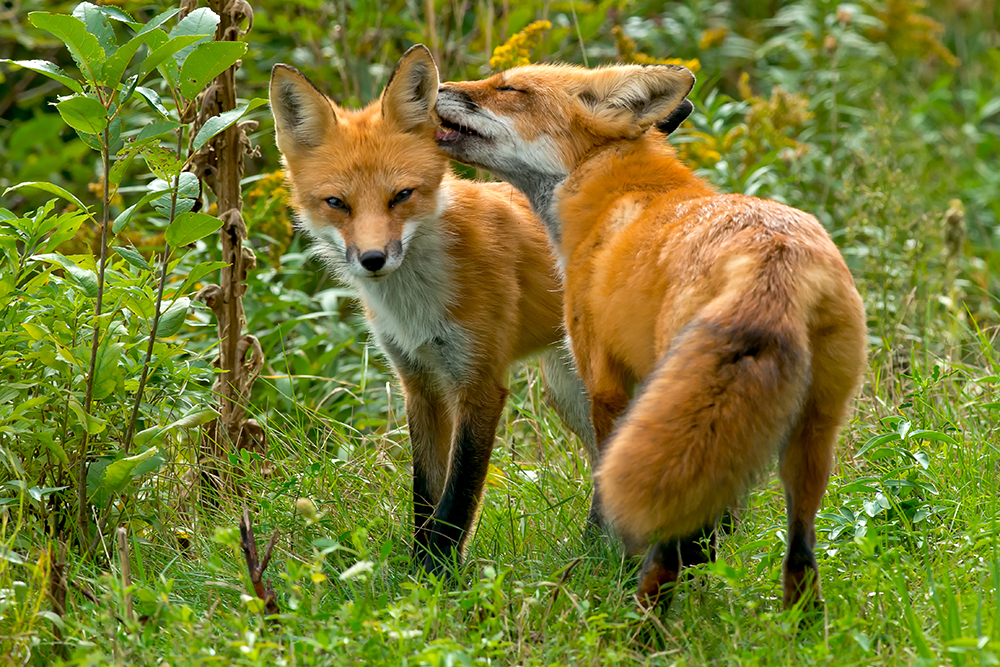
Hugely overweight foxes revealed on Finnish fur farms
FINLAND, 19 AUGUST 2017 – New footage from five Finnish fur farms shows that the selective breeding of super sized foxes – which caused an uproar in the 1980s – has not come to an end. The video material was filmed during the spring of 2017, says Oikeutta eläimille (Justice for Animals), the organization that released the material.
Finnish Fur Free Alliance member Animalia has been campaigning against fur farming for decades. In 1989, the organization brought into the spotlight the oversized ”super fox”. The so-called super fox was an exceptionally large and fast growing fox which was systematically bred on fur farms. As a result of the 1989 uproar and the resulting public pressure, fur farmers stopped breeding these super foxes.
Watch the footage here:
However, over the last few years, selective breeding of unnaturally big fur animals is again on the rise. Heidi Kivekäs, Animalia’s Acting Executive Director, says:
“For many years, the fur industry has been assuring super foxes are no longer being bred. The images released by Oikeutta eläimille show the situation is much worse than in the 1980s. In order to get bigger skins, the foxes are becoming increasingly bigger. They are a really sad example of how little the fur industry cares about the welfare of fur animals.”
Already in 1989, it was established that the rate at which the foxes were growing in size caused painful limb deformities and other health problems. These health problems have not come to an end but are even worse. According to a 2014 report published by Maatalouden tutkimuskeskus, the Finnish Agricultural Research Center, up to 86 per cent of farmed foxes were suffering from bent feet, and over 20 per cent of the animals were significantly obese.
 According to a 2016 report by the Finnish Natural Resources Institute, the size of the blue fox has increased considerably in recent years, which has also affected their foot health. Blue fox obesity and feet deformities make it difficult for them to move. Laura Uotila, Animalia’s Animal Protection Expert, says:
According to a 2016 report by the Finnish Natural Resources Institute, the size of the blue fox has increased considerably in recent years, which has also affected their foot health. Blue fox obesity and feet deformities make it difficult for them to move. Laura Uotila, Animalia’s Animal Protection Expert, says:
“It’s quite common these days for caged blue fox males to weigh over 20 kilogrammes, while in nature, the arctic fox usually weighs from 3 to 4 kilogrammes. In addition, the loose and folded skin and bent feet cause considerable welfare problems for these animals. The Finnish Animal Welfare Law already makes it possible to prohibit selective animal breeding if it causes animal suffering. In practice, however, the law is not respected.”
Finland is in the process of reforming its current Animal Welfare Law which is over 20 years old. Animal rights organisations are demanding significant improvements to be written into the new law. Laura Uotila:
”The new Animal Welfare Law needs to be stricter and it needs to mandate authorities to prohibit and intervene in selective breeding that causeshealth problems for animals. This is especially important as the fur industry itself is not doing anything about this.”




